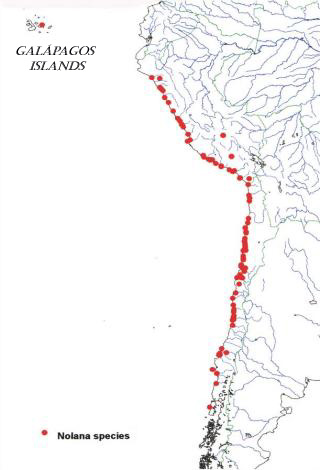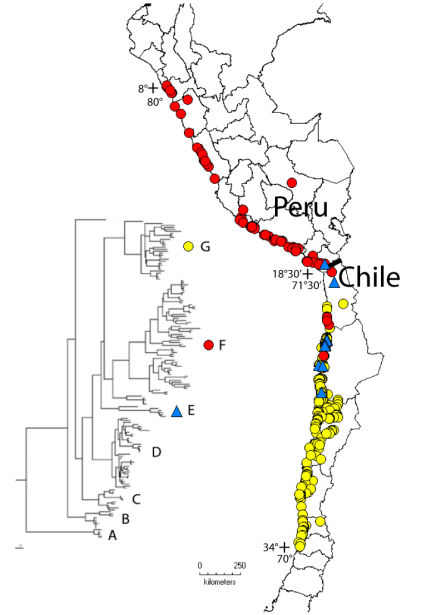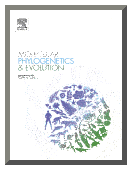|
The genus Nolana L.f.
(Solanaceae) was originally described by Linnaeus in 1762 and derives
its origin from the Latin, nola or small bell. The genus currently
consists of 89 species from Peru (40 species) and Chile (44 species),
four species found in both Chile and Peru, and one endemic species from
the Galápagos Islands (Dillon, 2009; Dillon, et al. 2003). Nolana is considered monophyletic and is diagnosed by possessing
fruits of a 5-carpeled gynoecium forming sclerified mericarps with 1-7
seeds each, a unique derived character in the Solanaceae (cf. Knapp, 2002).
Most species (~70 species) occupy fog-dependent, coastal environments
called lomas formations and occur from 8° to 30° S latitude and
generally within 25 kms of the Pacific Ocean (Dillon, 1997; Dillon 2005, Dillon &
Hoffmann, 1997; Rundel et al. 1991). The genus generally has flowers borne
singly in the leaf axils and corollas small to large, tubular-salverform
to campanulate, infundibular, or rotate, showy flowers. Colors generally
range from blue to lavender with whitish to yellowish throats, with or
without dark purple proximal spot and occasionally dark feathered nectar
guides.
As interpreted here, the
genus Nolana contains 89 species, making it the 4th largest genus
in the family Solanaceae, behind Solanum (1000-1500 spp), Lycianthes
(ca. 200 spp), Cestrum (ca. 175 spp) and just slightly larger
than Nicotiana (75-80 spp) and Physalis (60-70 spp). The
number of species has been controversal with some workers only accepting
18 species. However, extensive observations throughout the range of
the genus has allowed for the recognition of species primarily collected
in poorly collected regions and during optimal conditions.

|
With the support of the National Science Foundation DEB 0415573, DEB9801297, DEB 8513205 progress has made for greater understanding in a large and complex genus. The following papers present our data and working hypotheses for evolution and biogeography in Nolana.
|
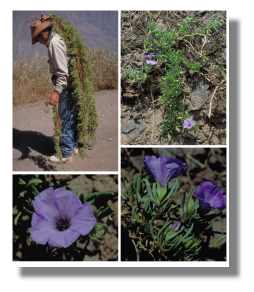 |
Five New Peruvian Nolana Species
|
 |
Five New Chilean Nolana Species
|
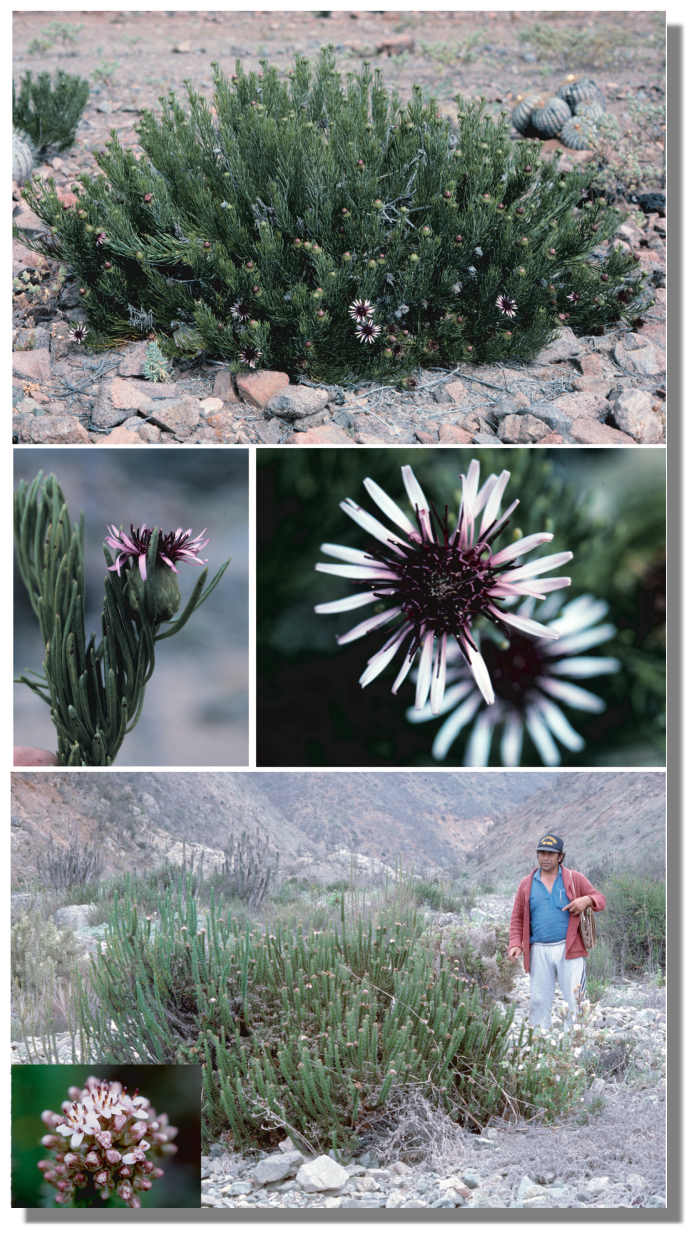 |

Federico Luebert, Jun Wen, & Michael O. Dillon
Botanical Journal of the Linnean Society
159: 32-51. 2009.
|
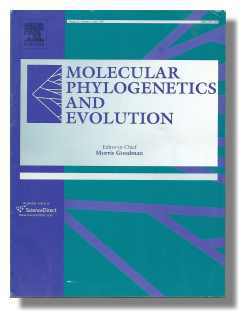 |
Molecular Phylogeny and Evolution
49: 561-573. 2008.
|
 |
Paranephelius & Pseudonoseris:
classification, biogeography,
and Andean orogeny
|
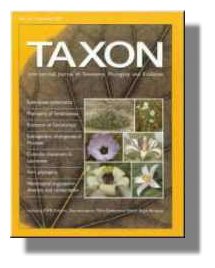 |
Phylogeny
of Nolana (Nolaneae, Solanoideae,
Solanaceae) as inferred from granule-bound
starch synthase I (GBSSI) sequences
|

[Visit
ABIS Homepage]
|

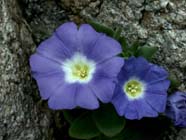 Nolaneae-Solanaceae
Nolaneae-Solanaceae
